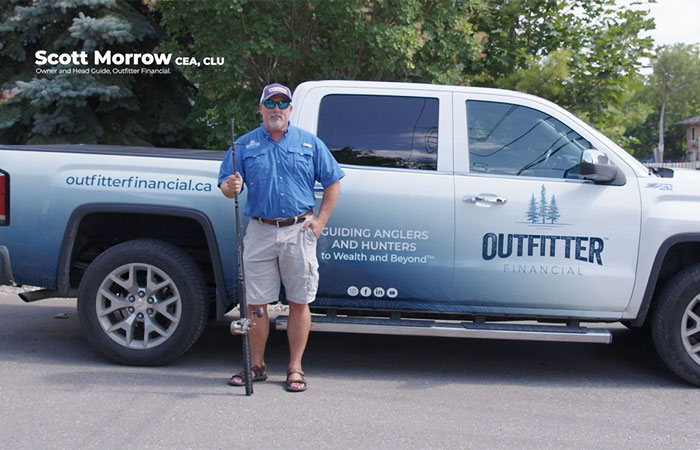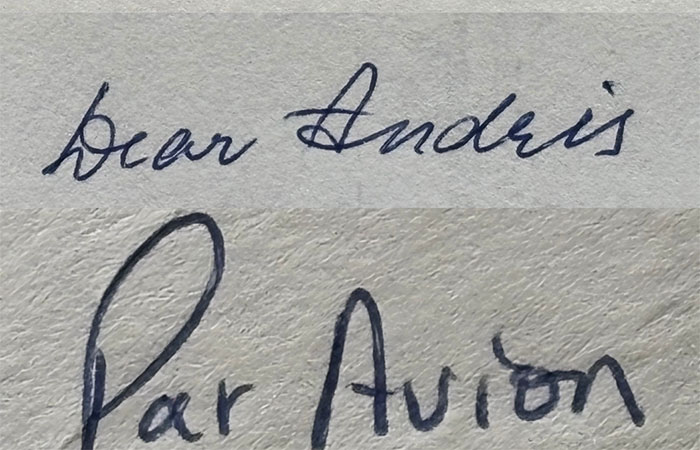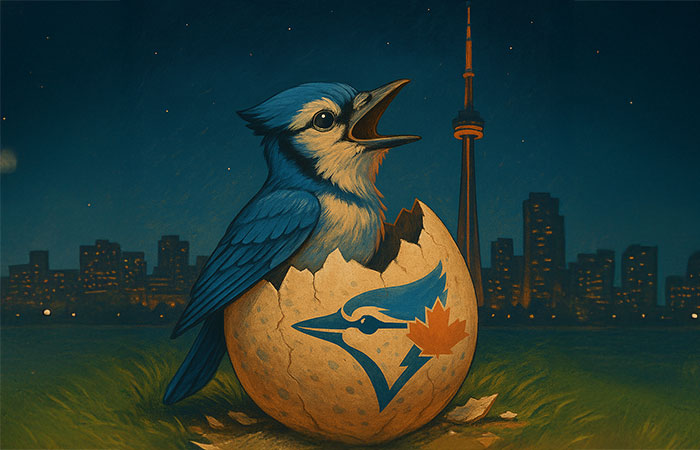Geddy Lee, Alex Lifeson and Neil Peart – Rush – are my heroes. I saw them perform 21 times, starting in 1982 and ending in 2015 on their triumphant 40th anniversary tour, the last they would ever do. Suffice to say that their music, and the example they set as kind, talented and successful human beings, has meant a lot to me for a very long time.
Like millions of Rush fans around the world, the shocking loss of Neil last week, at age 67 from previously undisclosed brain cancer, has hit me hard. It is also causing me to take stock. You see, in the deluge of tributes flooding social media these past few days, one stands out to me. It was a Tweet that summed up Neil’s life like this:
“Neil Peart lived the lives of 10 men.”
If that is an exaggeration at all, it is a minor one.
That’s because Peart wasn’t just one of the greatest drummers who’s ever lived, along with being a brilliant lyricist – he was also a profoundly curious, relentlessly active Renaissance man who was highly deliberate in wringing everything he possibly could out of every moment. Just as his drumming style was instantly recognizable for doing a prodigious number of things in small windows of time – and hitting those drums really, really hard – so did he live his life.
So I can already feel the sadness being replaced with a deep admiration for the way this man lived, with gratitude for the inspiring example he has set for us all – and also with humility, for I must acknowledge that I, myself, have a lot still to do.
I can learn from Neil. We all can. Millions of drummers already have: as Foo Fighters frontman Dave Grohl put it in his remembrance, Peart “was called ‘The Professor’ for a reason: we all learned from him.”
What are the lessons, exactly, for life and work? They are legion, but for today I’ve chosen just these five:
1. NEVER SELL OUT
Teaching my clients about Rush has been central to my branding work, primarily because the band is a stunning example of successful brand positioning, the essence of which is to be one thing – instead of taking the seductive route, which is to try pleasing everyone.
In a nutshell (and this is the very charitable way to put it) a lot of people, especially the critics, didn’t like Rush. At all. They thought that Geddy Lee’s voice was too high and weird, or that the music was pretentious and complicated, or that the songs were too long, or that the guys weren’t cool enough, etc. etc.
But the band didn’t care. By making the music they wanted to make, and then touring almost unimaginably hard, they built the most loyal fan base in the world. It’s a following that prompted Geddy to describe Rush as “the world’s biggest cult band.”
For my money, they are also the world’s biggest cult brand. A single triumvirate for 46 years starting in 1974, they played thousands of shows around the world, were the first band to receive the Order of Canada, were inducted into the Rock and Roll Hall of Fame and along the way, sold 40 million records. These included 20 straight gold and platinum studio albums, placing them third on the all-time list for this metric, behind only – wait for it – The Beatles and The Rolling Stones.
All of this by a band that wide swaths of people have never seen live or even really thought about. All of this with exceedingly little support from the mainstream media until the twilight of their career. The most notable holdout was the very pinnacle of the rock press, Rolling Stone, which refused – for 41 years – to put them on the cover. They finally did in 2015, in the midst of the band’s final tour, even then referring to them, right there on the cover, as “geek gods.”
From early on, as Peart put it, Rush had a mission statement: “We make music we like, and hope other people like it, too.” They didn’t go into the studio and predicate their work on what they thought people might like to hear – even if those people were at the all-powerful record company.
The first two Rush albums, in 1974 and ‘75, did quite well, and the band’s overlords at the record company were quite pleased. But then Rush released their third album, Caress of Steel, which did not exactly fly off the shelves. With the self-deprecating humour that became a defining feature of the band, Lee, Lifeson and Peart nicknamed that tour the Down the Tubes tour. For whereas they had been opening on the previous tours for the likes of Kiss in 15,000-seat arenas, now they were opening for Ted Nugent and his ilk in bars, for crowds as small as 20 souls.
The record company could see the problem clear as day: Neil and his band mates were making the songs too damn long, so radio stations wouldn’t play them. Their logical demand, therefore, was for Rush to hit the studio and pump out an album with some three- or four-minute, radio-friendly hits. The boys in Rush, polite Canadians that they were, said, sure, we can do that – and came out with an album entitled 2112 (“twenty-one-twelve”), a bombastic, rock-opera-esque extravaganza with a song so long – more than 20 minutes – it took up the entire length of side one.
As the band recounted in the documentary, Rush: Beyond the Lighted Stage, they decided, at the very precipice of failure, that if their careers were going to flame out, they would pour on the gasoline and go out in a blaze of glory.
Their gamble paid off. 2112 was a huge hit with fans. So much so that it bought the band their eternal freedom: from that album onward, Rush was free to create whatever music they wanted, slap it on a record and hand it to the record company, which was then obliged to go out and market it, no questions asked.
As for the record company’s demands, Peart, a self-described “bleeding heart libertarian,” summed it up like this: “No, you can’t tell us what to do, and no, we don’t care.”
2. PRACTICE, PRACTICE, PRACTICE
I once heard Neil quote, in an interview, the old nugget about the younger man asking the older man on New York’s 57th Street: “Excuse me sir, but how do you get to Carnegie Hall?” The answer, of course: “Practice, practice, practice.”
Of course Neil Peart had very special natural talent. Acclaimed as one of the greatest drummers ever to wander the face of the earth, the same Rolling Stone that despised Rush for decades ranks him #4 (behind John Bonham, Keith Moon and Ginger Baker), and Modern Drummer ranks him #3 (behind Buddy Rich and John Bonham).
But he also had an unrelenting desire to be the best. He is survived by his second wife, the photographer Carrie Nuttall, along with their daughter, 10-year-old Olivia. Carrie met Neil in his 40s, when he was already firmly established as a rock and roll colossus. Nevertheless, owing to the band’s cult status and lack of mainstream exposure, she relayed that she hadn’t really heard of him before. The depth to which his fans worshipped his drumming ability was a surprise to her. She acknowledged his greatness but was quick to point out that it didn’t just come from nowhere. The fact was that he practiced not just incessantly, but very, very hard. From Progarchy.com:
“She already knew of her husband’s intensity, but seeing him in action actually shocked her. ‘I always knew he was focused,’ Nuttall said, ‘but I had never seen him in the role of drummer and lyricist before we got married. And I wasn’t prepared for it. You hear stories, but until you’ve seen it firsthand, you have no idea.’”
Neil Peart always wanted to be better than he was. Several years earlier, in the mid 90s, at the peak of his profession and having already played the drums for 30 years, Neil took the remarkable step of deciding to reinvent his style. He wanted to be looser behind the drum kit. So he reached out to legendary drumming teacher Freddie Gruber for lessons.
As Jason McGerr, drummer for Death Cab for Cutie, put it: “It takes a lot of courage, being a drummer of the stature of Neil Peart, to be able to say, ‘I can improve.’ That was the most refreshing thing you could have seen, that your hero could also still learn. That they weren’t just done.”
Neil always wanted to be better, and he insisted on going out on top (at 62 years of age!). His reason for retiring after their 2015 40th anniversary tour, R40, was straightforward:
“I feel great that I was able to sustain my prime for a long, long time and keep improving to the level that I wanted to get to. To go out on the top and not face the diminishing of your abilities – that is what I couldn’t face.”
3. GIVE YOURSELF A CHANCE
One should never get the impression, owing to his rock star status, that Neil Peart lived a charmed life. In 1997, his only daughter, 19-year-old Selena, died in a car accident while driving to university in Toronto. His first wife, Jackie, died less than a year later of cancer, but Neil knew that what really killed her was a broken heart.
Neil told Geddy and Alex that he was finished with Rush. He didn’t know where to go, or for how long, but he knew deep inside that his life depended on traveling, somewhere. So he got on his motorcycle – “to try to figure out what kind of person I was going to be, and what kind of world I was going to live in” – and began a 90,000 km, 14-month odyssey from Quebec to Alaska, down the Pacific coast, across Mexico and as far south as Belize.
From the book he wrote about the experience, Ghost Rider: Travels on the Healing Road: “I remember thinking, ‘How does anyone survive something like this? And if they do, what kind of person comes out the other end?’ I didn’t know, but throughout that dark time of grief, sorrow, desolation, and complete despair, something in me seemed determined to carry on. Something would come up.”
Neil gave himself a chance. “Something would come up,” he thought. And it did. At the end of his journey, he met and married Carrie, who invigorated his will to live and have a new child, Olivia; Carrie also kindled in Neil the desire to play with Rush again, which reunited after a five-year hiatus and continued to record albums and go on tours until their 2015 farewell.
4. BE A PROFESSIONAL
I have to admit that I have sometimes scoffed at the idea of my clients using the word “professional” as a defining feature of their brand. At first glance, the word can seem like the lowest acceptable adjective, a hair’s width above “unprofessional.”
Neil Peart made me rethink that. My sense is that professionalism wasn’t the lowest acceptable standard to him – it was the highest. More specifically, it is not about being “professional” but rather “a professional”, thereby being the very personification of the concept.
In the early days in the 1970s, Neil, Geddy and Alex played up to 250 nights a year. They often drove 500-600 km overnight between gigs, sleeping upright in their rental car. Eventually they graduated to a station wagon – which, gloriously, allowed them to take turns sleeping lying down on the luggage in the back. Amid that Groundhog Day grind, Neil took with the utmost seriousness his responsibility to deliver the best possible performance – to prove his ability – every night. Along with his Carnegie Hall reference, I’ve heard him use this other old school showbiz maxim: “You’re only as good as your last show.”
In Time Stand Still, the 2016 documentary that overlays the band’s final R40 tour with a retrospective on its four-decade relationship with fans, it is revealed that Neil was in almost unbearable pain for a considerable part of the 35-show journey. In fact, Peart was “done with the touring life, as a life” after the very first tour, 41 years previous. Seeking an existence more varied than the monotonous swirl of sound checks, shows and overnight drives, he took up a variety of interests, including long-distance bicycling and motorcycling between shows.
Travelling by motorcycle between venues on the R40 tour, water from a torrential downpour found its way into his riding boots, resulting in a horrendous infection that left him almost unable to walk. This for someone who stomped his foot pedals hard enough to break right through the drumhead.
In Time Stand Still, he recalls standing backstage moments before a particular second set: “I remember standing and looking around at everyone in the place having such a good time…except me. But it’s like ‘yeah, I’m suffering here and I don’t want to do this, but I’m going to.’
“That’s what makes a professional. There’s no way you go up on stage with your frailties. There’s no way you go up on there with your regrets or resentments or anything. Every night, bring that commitment.”
5. ASK YOURSELF: WHAT’S THE MOST EXCELLENT THING I CAN DO TODAY?
A second Twitter remembrance that struck me as especially inspiring was that of Rod Morgenstein, drummer of the Steve Morse Band, which opened for Rush in a series of mid-80s shows. Rod’s post chronicles how exhausting the touring life could be, saying that most musicians will:
“…agree on the physical and emotional toll that endless touring can take on a human being. That said, a typical show day often consists of travel, sound checks, meet and greets, interviews, the performance, followed by more meet and greets.”
But as Morgenstein recounts, Peart’s day was far more populated than that. Neil would be up in the very early hours, bicycling from the previous night’s city, up to 150 miles away. After several hours of riding, Neil would arrive at the new venue in time for sound check. Which was followed by dinner. Which was followed by a conversational French lesson from a local French-speaking tutor. Which was followed by warming up on a small drum kit in a private room, which was followed by actually performing a two-hour concert for 15,000 fans (which Neil has described as running a marathon while doing calculus), which was followed by hanging out for a short time back stage before retiring to his tour bus to work on “one of his future literary creations.”
That pace quite frankly sounds insane, but evidently not too outlandish for someone described by Morgenstein as “the textbook definition of ‘carpe diem,’” who made a habit, throughout his life, of asking himself a question that is simple to pose but very difficult to answer and then follow through on: “What’s the most excellent thing I can do today?’”
—
In his speech at Rush’s induction into the Rock and Roll Hall of Fame in 2013, Neil acknowledged the band’s influence like this: “I have always liked to quote from Bob Dylan: ‘The highest purpose of art is to inspire. What else can you do for anyone but inspire them?’”
A most excellent point. And so, to this initial shortlist of lessons learned from The Professor, let’s add a sixth: inspire someone.




